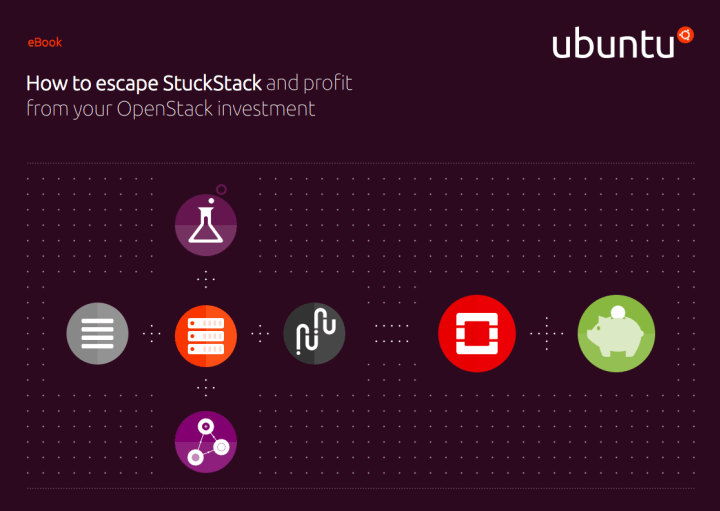Four steps to mobilising legacy OpenStack and escaping StuckStack
Canonical
on 26 September 2017
Tags: cloud , E-book , OpenStack , stuckstack , update

According to figures from the OpenStack Foundation, just 20 per cent of users are using the latest version of the software. Companies that fall to far behind updates risk becoming stuck on an older version of OpenStack, leaving themselves in danger of higher costs, diminishing agility and reduced security. We call this condition StuckStack, and have written an ebook to help you escape this trap.
All software needs regular upgrades to work effectively. The OpenStack Foundation distributes regular updates and a new release every six months to ensure that the software is up-to-date with technology developments and has the features that users require.
But many OpenStack users do not update their software regularly. In fact, around 80 per cent of OpenStack users are running older versions of the software. However, sitting out the upgrades can create significant problems. And as the new systems progress, support for the old incarnations gets withdrawn and this leaves many users stranded.
This is what we call StuckStack.
Why does this happen?
Any software comprised of many different components, third-party integrations and revisions needs tight version control. If not, complexity can become its downfall. Under these circumstances some organizations worry that it is too time consuming and costly to upgrade, since so many complex relationships must be re-established between services and data.
However, not upgrading the OpenStack can create many challenges. One of the biggest is that security fixes and mission-critical updates from the vendor will come to an end. Not only does that leave you open to exploits, it can also negate insurance cover. In addition, development staff won’t want to stay with a company in which their skills can become obsolete, which drives up recruitment costs and damages business agility.
But there is no need to abandon your investment in OpenStack technology, because it is possible to get back on track with a methodical approach.
Four-step approach
Download our ebook How to escape StuckStack and profit from your OpenStack investment to find out about our four step-methodology to overcoming this upgrade trap. Here is a taster.
- Prepare for change
Aim to ensure that your technology can match the speed at which your business is changing in the future. To achieve this, the infrastructure needs to be defined to model hardware and software, in a “try before you apply” form of modelling. We advise that you should stick to standard platforms and not be needlessly ambitious.
- Build a standardised cloud infrastructure
Don’t attempt to build an OpenStack cloud until you are fully confident that you have the full domain expertise, an overview of all your cloud options and detailed platform knowledge. Estimate the cost of deploying, upgrading, and supporting OpenStack clouds in house. In addition, investigate all your automated cloud build options.
- Migrate workloads
Research which tools you will use to help you lift and shift workloads and think how you will be re-architecting these for containers and cloud. Don’t assume that it will be straightforward migrating an existing workload in your current virtual machines to a newer one. It should be, but make contingency plans in case extra time is needed.
- Create the culture
The final phase is about creating the culture (both in business processes and interdepartmental harmony) that makes for painless upgrades to new OpenStack releases as they come out. They key is to adopt a smoother model for managing change, with your development and operations departments coming together in a harmonious DevOps culture.
The ebook also describes how our customers from Deutsche Telekom to eBay have used Canonical technology to get the most out of OpenStack – and overcome the StuckStack problem.
Download How to escape StuckStack and profit from your OpenStack investment ebook.
Smart operations, optimal architecture, better pricing.
OpenStack and Ubuntu bring automated deployment and management that help you optimize infrastructure costs — no matter your industry or use case.
Newsletter signup
Related posts
Join Canonical at the first-ever African OpenInfra Days
For the second time, and in less than one month, Canonical is coming to East Africa! Three weeks ago, we had the first-ever UbuCon Africa, which was...
OpenStack cloud – happy 15th anniversary!
Happy birthday, OpenStack! It’s astonishing how fast time flies – fifteen years already. Yet, here we are: OpenStack cloud still stands as a de facto standard...
OpenStack PoC? No problem!
Setting up a proof of concept (PoC) environment is often one of the first steps in any IT project. It helps organizations to get to grips with the technology,...
